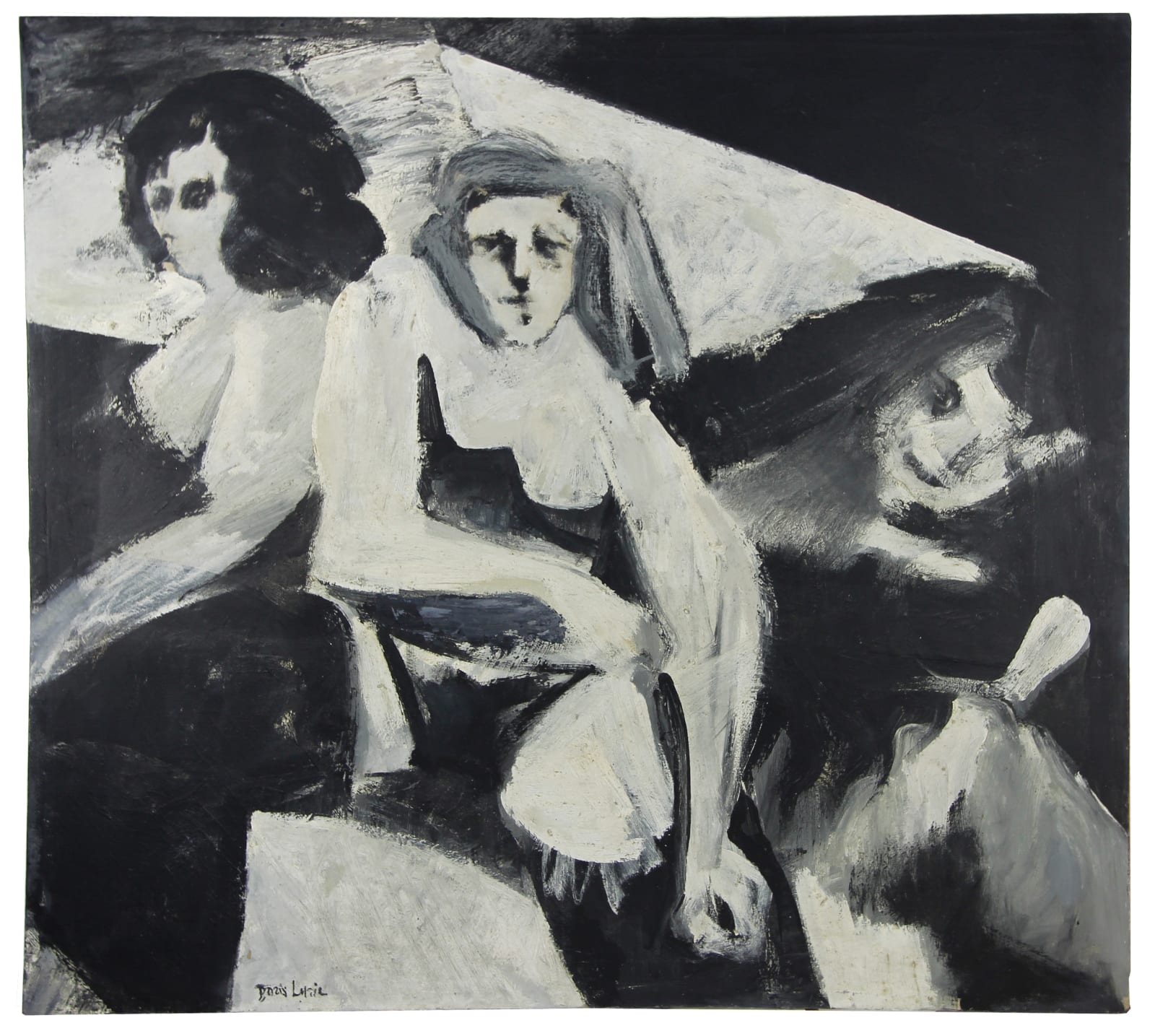Boris Lurie
New York in 1959. Since the end of World War II, Manhattan has been the unchallenged capital of the art world. If you make it there, you make it anywhere. Pop art appears on the horizon to supersede abstract expressionism. At the March Gallery in the East Village, NO!art takes the stage as the antipode to an unbridled consumer society. Shadows in paradise. In the true sense of the word. Every household meanwhile has a refrigerator and an air-conditioning unit. During a heat wave in the summertime, the city consumes too much power, and BANG – a blackout results. The city is dark for eight hours. A more fitting performance for the birth of NO!art could not have been conceived by Boris Lurie, Sam Goodman and Stanley Fisher. But Lurie would have most definitely rejected this sort of accompaniment. His art is certainly radical but never misanthropic. His works reveal how totally vulnerable and defenseless the individual is in the face of terror and violence. In German concentration camps and murderous ghettos, Boris Lurie had gone through the Ninth Circle of Dante’s Hell – its deepest level. He is one of the few who had seen and yet survived it. As all other witnesses, he is initially speechless in view of the genocide and the war which destroys everything. He makes drawings of scenes — nothing else. At the beginning, the atrocious experience is indescribable and cannot be expressed in any form at all. Yet, he finds his very own language with his collages – once he had come up with a sort of quasi-translation, changing from production esthetics to reception esthetics that later generations can also understand. He uses his pictures and later his novel “House of Anita” to visualize the unexpressive events by transferring his experiences into an understandable and tolerable form for those of us, who were not present. The large format painting ”Three Women”, dated 1958-59, is one of the last in which he used painting as an artistic medium. We can only speculate: Is it on the borderline between production and reception esthetics? He will subsequently begin to work with collages and sculptures. That would mean this painting is a way of processing and of coming to terms with his experience. The three women would then be a dark epitaph in memory of his mother, his younger sister and his teenage sweetheart – all three killed in the Shoa. Or do we attach too much importance to the dichotomy between offender and victim and– through the perspective of the offenders – thus see in this picture a work of holocaust art? Lurie does not make any detours in his collages. He confronts the viewer directly and unequivocally. A heap of dead bodies and a pin-up girl are past and present in his reality of life. What would we see in the “Three Women” if we were unaware of the biographical context? Three enigmatic figures – one of which is a disintegrating being. Lurie models the picture from black and white surfaces which are at hard angles to each other but are also mixed or become blurred. Noses, mouths and eyes are discernible; also torsos, shoulders, necks; curves are evocative of breasts. Lurie shapes and forms the center figure most clearly. While her right arm is at an angle in front of her abdomen, she rests her left arm on the thigh of her legs spread apart. Are her legs really spread open? Is the black triangle her pubic hair? Sometimes, when context scientists are called in prematurely or if too much is known about the biography, viewpoints are all too soon cemented although they might later be found to actually have nothing to do with the subject matter of a picture. For instance, I had first seen Lurie’s dead sister and mother in this painting. But the longer I have known this picture, the more unsure I am about it. Perhaps the work just shows three prostitutes under the cone of a bright light in a darkroom. Yet one thing is certain: It is a magnificent and timeless painting, and all else is in the eye of the beholder.
Jürgen Joseph Kaumkötter, Director of the Museum Center for Persecuted Arts, Solingen, 2020
